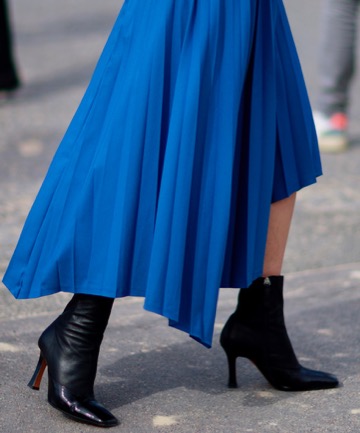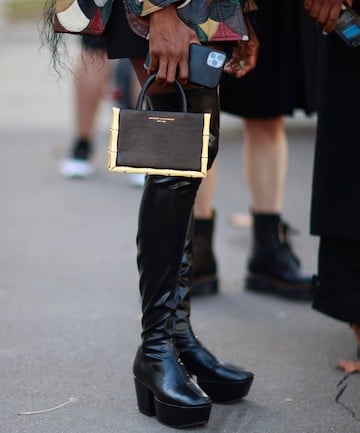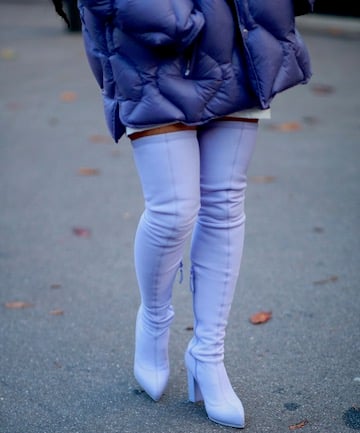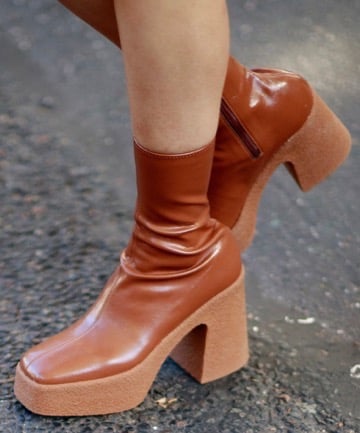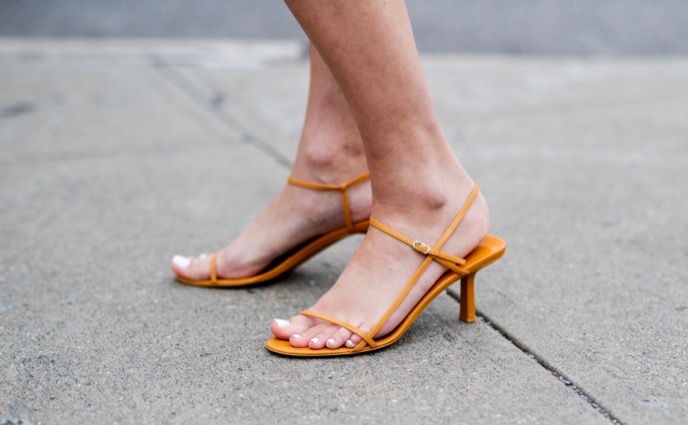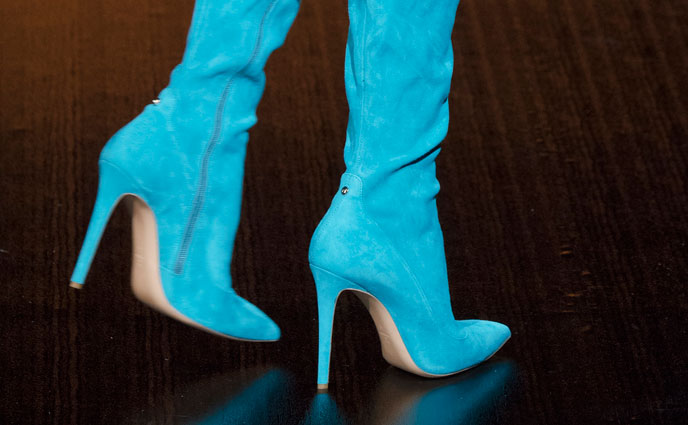We've all been there. It's the middle of winter and you're bundled up from head to toe. You get to your destination and are asked to take off your shoes. (Seriously, why don't people warn us when we're going to be asked to take off our shoes?) We've now come to terms with the fact that it's best to always be prepared.
In summer flaunting our feet is expected. Which is why we tend to pamper our heels and toes. After all, open-toe shoes can be hard on our feet often making our feet look worse for wear come fall. Even if they've been treated to pedicures all season long.
So we asked top dermatologists for their top tips on year-round foot care.
Image via Imaxtree
"Our feet get battered from walking, jumping, running and pounding," says dermatologist Dr. Purvisha Patel. "Our bodies protect chronic trauma by causing the skin to get thicker — this is how calluses form. In the winter our feet are inside socks, sweaty shoes and boots. It's important to exfoliate as it gives us an even smooth surface to work with/walk on."
Image via Imaxtree
A note of caution to women who favor uncomfortable footwear. It's not just aesthetics that should motivate you to take care of your feet all year long. Patel points out that if you favor one side of your feet when walking, then you can end up with joint issues, including in your knees and hips.
Image via Imaxtree
"Wash your feet every night with soap and water to kill any germs or bacteria you may have picked up during the day," suggests Dr. Mona Gohara, dermatologist and associate clinical professor at the Yale Department of Dermatology. "You'll also want to exfoliate two or three times a week in the shower to remove dead skin and moisturize both morning and night. Be sure your feet are properly dry afterward as bacteria and fungus can grow otherwise."
Moisturizing after exfoliating is important to do all year long since it helps repair the skin barrier and makes the skin on your feet more supple and soft. "The best time to moisturize is at night — this is the longest amount of time the product can be on your skin undisrupted and our body temperatures rise at night helping ingredients get absorbed," says Patel. "Using occlusion of the moisturizer (with cotton socks or baggies) will help the moisturizer work better."
Two to three times a week is enough exfoliation for most people. But if you have very thick skin on your heels, it's a good idea to exfoliate daily.
"Exfoliating comes in two forms. Physical, such as with a loofah or pumice stone, which should be done on wet skin, preferably when in the shower. Or chemical, which uses ingredients, such as uric acid, lactic acid and/or salicylic acid to break down the bonds of the top layer of dead skin to help it slough," says Patel.
"For feet, physical exfoliants work better than chemical. I like Visha Skincare Sugar Shrink Body Scrub, $36, which was made to multitask on the feet as a physical exfoliant/foot scrub and the tea tree oil combats any fungal growth. I also love to use feet masks that have acid in them every few months. They contain stronger solutions that you wear in a bootie for a specific amount of time resulting in the skin peeling over the next few days."
A good product to check out is Baby Foot Exfoliation Foot Peel, $24.99.
While it's less likely during fall and winter, if the tops of your feet are going to be exposed, apply a broad spectrum body sunscreen. Gohara recommends EltaMD UV Active Broad-Spectrum SPF 50+, $29.50.
Image via Imaxtree


